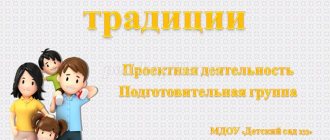Project “My city is the best city on Earth”
https://yadi.sk/d/wVL-lpShMWSG3 Competition of student research projects on the topic: “My city is the best city on Earth”
Completed by: 8A class student Morozova Anastasia MBOU “Secondary School No. 23” in Engels, Saratov Region.
Head: Svetlana Alekseevna Safronova (teacher of foreign languages and art)
The goal of the project is to conduct a short distance trip and compose a story-essay. The project allows students to get acquainted with the history of the city, its formation and development; study your hometown and famous people in more detail; teaches how to use research work; helps broaden the student’s horizons; formation of civil-patriotic feelings and instilling respect and love for the native land.
Project directions:
conduct a short correspondence trip and compose a story-essay about the famous sights of your city, discover something new and surprising; talk about the lives of wonderful fellow countrymen: collect material about the life and activities of famous people of your city,
show famous excursion routes around your city or develop your own educational and tourist route. Present the project in the form of a presentation or make a video. Tell us about the most important and interesting things,
about what you are proud of, what you love, where you visit most often!
Story-essay by 8th grade student Anastasia Morozova.
I was born and live in the city of Engels, which was previously called Pokrovsky. Maybe my city is one of those many settlements in our country that are somewhat similar to each other. But for me the city of Engels is the dearest, the best city on earth. He is dear to me for his unique past, present and, of course, future.
Why is he the best for me? I have been to many cities in Russia: Moscow, Nizhny Novgorod, Kazan, but I always happily returned home to my Engels. This is my home, this is my family, this is my friends.
I have already said that the city is dear to me for its history. The history of each city is unique, and the history of our city is unique. Engels' symbol is a bull carrying a bowl of salt on its back. People coming to our city for the first time initially think that this is a symbol of a meat processing plant. But that's not true. Our city was founded as Pokrovskaya Sloboda in 1747. By decree of Empress Catherine, the second Chumakov cab drivers carried salt from Lake Elton on oxen. Precisely on oxen, because horses could not withstand such hard work. In 1894, after the opening of the railway, the city turned into a large market in the Volga region. In 1931, Pokrovskaya Sloboda was renamed Engels and became part of the Samara province.
Do you know that our city was the capital? No, not countries, of course. From 1922 to 1941, Pokrovsk-Engels was the capital of the Volga Germans. Also in my city such famous and well-known people were born as: writer Lev Abramovich Kassil, author of the famous “Shvambrania”; composer Alfred Schnittke; actor Sergei Baryshev; pilot-cosmonaut Yuri Shargin. And I'm proud of it.
Where did the world's first astronaut land? Everyone knows that Yuri Gagarin landed near our city. After the meeting, he was brought to our Flying Town. He walked along the same paths to the Officers' House in the Flying Town that I walk along. And how nice it is when every year on Cosmonautics Day many famous people and just guests come to our city to visit the landing site of the first cosmonaut.
And what about the “night witches” during the Great Patriotic War? These were simple girls on cardboard planes, who terrified the Nazis with their night flights and shooting accuracy. It was here, in my home and beloved city, that Marina Raskova taught girls how to fly airplanes. A street in the city is named after Marina Raskova.
The city has many places of interest: the Lev Kassil Museum, the Mylnikov Art Gallery, the operetta theater, and the beautiful Boulevard of Roses.
And our city is located on the banks of the beautiful great Volga River. It is beautiful both in summer and winter.
Today Engels is an educational and research center. The Volga Research Institute of Hydraulic Engineering and Land Reclamation, the Engels Technological Institute of the Saratov State Technical University, and the Volga Cooperative Institute of the Russian University of Cooperation are located here. I believe that my city, with its unique history and interesting events, has a wonderful, bright future.
Engels is the best city on Earth! This is my city, this is my homeland!
Essay on the topic My favorite city
Grandfather says that when I was little, my hometown was just as clean, blooming and rainbow-colored, people smiled at each other, went to demonstrations together, cleaned the yard and planted beautiful flowers in the flowerbeds. I believe him because I also love my city.
The most joyful childhood memories are associated with him, from digging in the sandbox with other kids to Sunday trips to the movies with his parents.
There are many wonderful monuments in my beloved city, and they say that some of them were sculpted by a famous architect, to whom many interesting articles are devoted in the press.
There are few old buildings on the city streets, but there are several spacious squares and green parks where young couples stroll and funny kids run around. I also love spending time in one of these parks, where there are marble benches, rainbow fountains sparkle in the summer, and falling leaves rustle underfoot in the winter.
I love my city for its wide sidewalks and white curbs, flower beds with flower arrangements, and especially for the proud character of the people, passed down from generation to generation.
Here, streets and monuments are named after national heroes; jazz bands and street musicians perform in the center in the evenings. In one of my favorite public gardens, in the warm season, “living” sculptures stroll, delighting children and adults, and when the circus arrives, real fun reigns.
Here I feel protected next to relatives and friends, I know every nook and cranny and, it seems, I can read the thoughts of any person. At night, my friends and I often board a trolleybus and ride along quiet streets towards adventure.
And on weekends we gather in the yard, have fun and communicate with each other, or visit local museums and art galleries.
And in winter, especially if it snows in the evening, my city turns into a winter fairy tale. On such evenings, the city seems to calm down; instead of noise, you can hear snow falling, fluffy flakes outlining houses, parked cars, benches and signs of city stores with white outlines.
If they offered me to move to some other place, I would not agree. Because my hometown is the best on earth, my parents grew up in it, I am starting to grow up, and someday I will be happy to tell my children about the best time, going through childhood memories and memorable dates.
Project in the preparatory group “My city where I live”
Project type: creative, long-term, exploratory
Type of project: family, group
Project participants: preparatory group children, teacher, parents
Venue: MBDOU "Kindergarten No. 38 "Belochka"
Implementation period: from 09/01/2014 to 05/29/2015
Objective of the project
: clarify and expand children’s knowledge about their hometown
Tasks
:
– Introduce children to their hometown with its history and sights
-Develop a sense of responsibility and pride for your hometown
-Arouse the desire in children to find information, material and summarize them into thematic albums, layouts, photo exhibitions, etc.
– Involve parents to participate in project activities.
Problem: based on the monitoring results, it was revealed that most children do not have enough knowledge about their hometown. Children do not know the names of the streets, who the streets were named after, what architectural monuments are located in the new part of the city and the old, historical data, why the city is named so, etc. Knowledge of the city’s attractions is insignificant. They also don’t know the professions of famous people living in their hometown.
Relevance of the project: Using the project method will help cultivate moral feelings in children. Develop an educational interest in the past and present of the city.
Hypothesis: This project “My Hometown” will help expand children’s knowledge about the history and attractions of the city. It will help children and parents to join the rich traditions of their hometown and see the beauty of their hometown. Parents will become active participants in the educational process at the preschool educational institution.
Stage 1: - preparatory
Goal: to identify the level of knowledge about your hometown.
– diagnostics of children on this topic.
-selection of methodological encyclopedic, historical reference, fiction literature. Based on the topic of the project, selection of necessary equipment and manuals for the practical enrichment of the project.
Stage 2: - main includes.
Project implementation.
Long-term plan
| Form of work | Subject | Responsible | Date |
| Questioning parents | Education of moral patriotic feelings | teacher | October |
| Participation in the competition | All about you our Perm region | Educator, teacher, speech therapist | november |
| Creating a developmental environment ensuring development, interest and curiosity | Purchasing a city map, illustrations, photographs of the city, newspaper clippings about famous people, books about your hometown | Teacher, parents | november |
| Excursion to the library | Zimushka-winter | MBU "Children's Library", Educator, parents | December |
| Work in a mini museum | Photo – exhibition “Favorite places in my city” | Educator parents | January |
| Creating an Album | Poems about the city of Chusovoy | Educator parents | February |
| Creating a manual | Layout "Old and New Town" attractions | Educator parents | March |
| Creating a photo album | "My city where I live" | Teacher parents | April |
| Open event | My city Chusovoy | teacher | May |
3-stage final
Purpose: summing up, analyzing the results obtained
Expected result: Children have formed ideas about their hometown, as well as a sense of responsibility and pride for their city. Children learned to find information, historical data, materials and summarize them into albums, photos and exhibitions.





